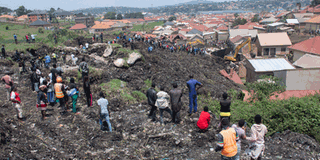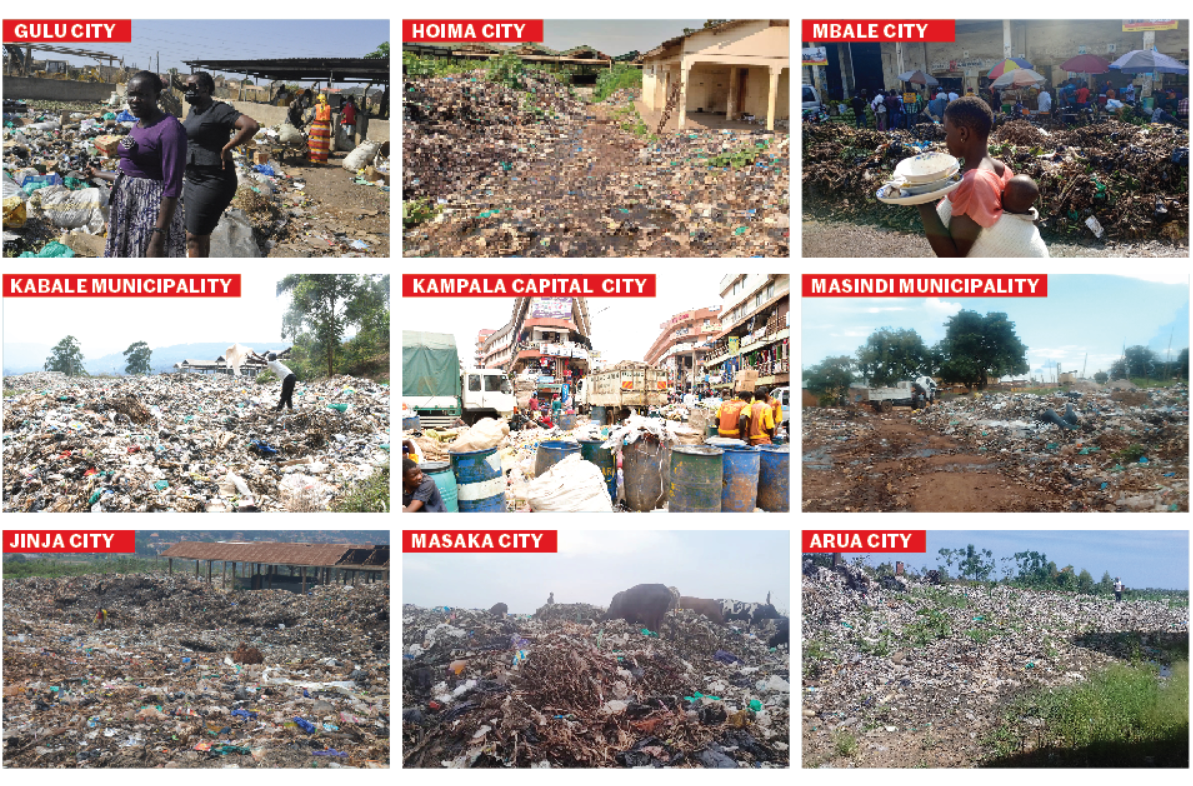Kiteezi tragedy: How insurance can heal the wounds

People look on as an excavator digs through rubbles at Kiteezi landfill in Wakiso District on August 10, 2024. PHOTO/ISAAC KASAMANI
What you need to know:
As the city grapples with the aftermath, insurance can play a crucial role in facilitating recovery and providing financial stability.
The recent collapse of the Kiteezi Landfill, which tragically resulted in the loss of more than 30 lives, has exposed critical vulnerabilities in Uganda’s waste management infrastructure.
This disaster emphasizes the urgent need for comprehensive insurance solutions, specifically catastrophe and credit life insurance, to support affected individuals and bolster future resilience.
Understanding the urgent need
The Kiteezi landfill disaster has left a profound impact on the community, both emotionally and financially.
As the city grapples with the aftermath, insurance can play a crucial role in facilitating recovery and providing financial stability.
This article explores how catastrophe and credit life insurance can address immediate needs and support long-term recovery efforts.
Catastrophe insurance
This provides immediate relief and long-term recovery.
Providing financial assistance
Catastrophe insurance offers essential financial support for emergency response and recovery efforts. This coverage is vital for addressing the immediate costs of disaster response, site cleanup, and rebuilding efforts, ensuring that resources are available to manage the aftermath effectively.
Repairing property damage
The collapse has caused significant damage to properties and infrastructure surrounding the landfill.
Catastrophe insurance can cover repair and replacement costs, helping affected residents and businesses restore their properties and resume normal operations.
Environmental cleanup
The environmental impact of the landfill collapse requires prompt remediation.
Catastrophe insurance can fund environmental clean-up efforts, addressing contamination and reducing public health risks, which is crucial for safeguarding the community’s well-being.
Credit life insurance protects loan obligations
Many individuals and businesses involved with the Kiteezi landfill may have outstanding loans related to waste management projects.
Credit life insurance provides protection by covering these loans in the event of unforeseen circumstances, such as the recent disaster. This coverage helps prevent additional financial strain on affected parties.
Supporting families
For families who have lost loved ones, credit life insurance can alleviate financial burdens by covering debts and loans. This support offers crucial relief during profound grief, allowing families to focus on recovery without the added stress of financial concerns.
A path forward for resilience
In light of the Kiteezi landfill tragedy, integrating catastrophe and credit life insurance into future risk management strategies is essential for building resilience. These insurance solutions offer:
• Immediate financial relief. This ensures that funds are available for disaster response and recovery.
• Long-term stability: this protecting against financial losses and supports families affected by the disaster.
The Kiteezi Landfill collapse has highlighted the need for robust insurance solutions to address both immediate and long-term challenges.
By incorporating catastrophe and credit life insurance, Uganda can enhance its ability to manage such crises effectively and support those affected.

Nicholus Sserunjogi.
Nicholus Sserunjogi is a researcher at the Insurance Training College and an insurance practitioner at ICEA Lion Life Assurance.




